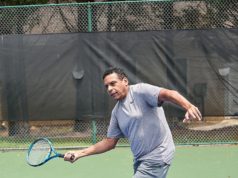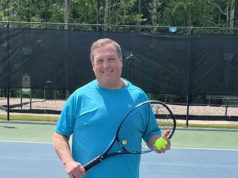By Richard Lehman, M.D., U.S. Center for Sports Medicine
Platelet-rich plasma, or PRP, has become standard treatment for many sports-related injuries, including tennis elbow, rotator cuff tendinitis, Achilles tendinitis and hamstring strains. Platelet-rich plasma is a concentrate of blood plasma derived from whole blood. In preparation for treatment, the athlete is seen by a physician, who draws blood (generally from the arm), places the blood in a centrifuge, and spins the blood to derive a small concentration of blood plasma that has several different growth factors that stimulate healing of soft tissue and joints.
Essentially it is a hyper-concentration of the products in one’s blood that lead to healing. These growth factors are the components in the blood that cause bone, ligaments, tendons and other soft tissue to heal. When the growth factors are hyper-concentrated, they greatly increase the speed and ability for these ligaments to heal. A perfect example would be tennis elbow, which is a breakdown or loss of blood flow in the outside, or lateral aspect, of the elbow. One’s physician would inject the PRP into the area on the lateral part of the elbow where the breakdown occurs. In the past, cortisone was used, but we now know that cortisone creates a breakdown in the tendon as opposed to healing in the tissue and is no longer recommended. Once the PRP is injected, this increases the ability to heal, allows healing in a shorter time and results in more complete healing than just resting the tendon.
Main indications in medicine are acute ligament strains (i.e., hamstring pulls, tennis elbow, Achilles tendinitis and patellar tendinitis). It is very beneficial in osteoarthritis of weight-bearing joints, specifically the knee and ankle.
The underlying principle is to concentrate to five to seven times physiological levels of PRP and when it is then injected, this concentrate increases the healing of the tissue. Following the injection, the joint or tendinous area should be rested approximately 10 days. Physical therapy commences at a week and return to sports normally occurs in four to six weeks.
Platelet-rich plasma has the ability to actually heal the underlying damage, as opposed to masking it, and is using the athlete’s own growth factors to heal the problem. This makes it completely safe.
If you have any further questions about PRP injections, please contact us at the U.S. Center for Sports Medicine via uscenterforsportsmedicine.com.




